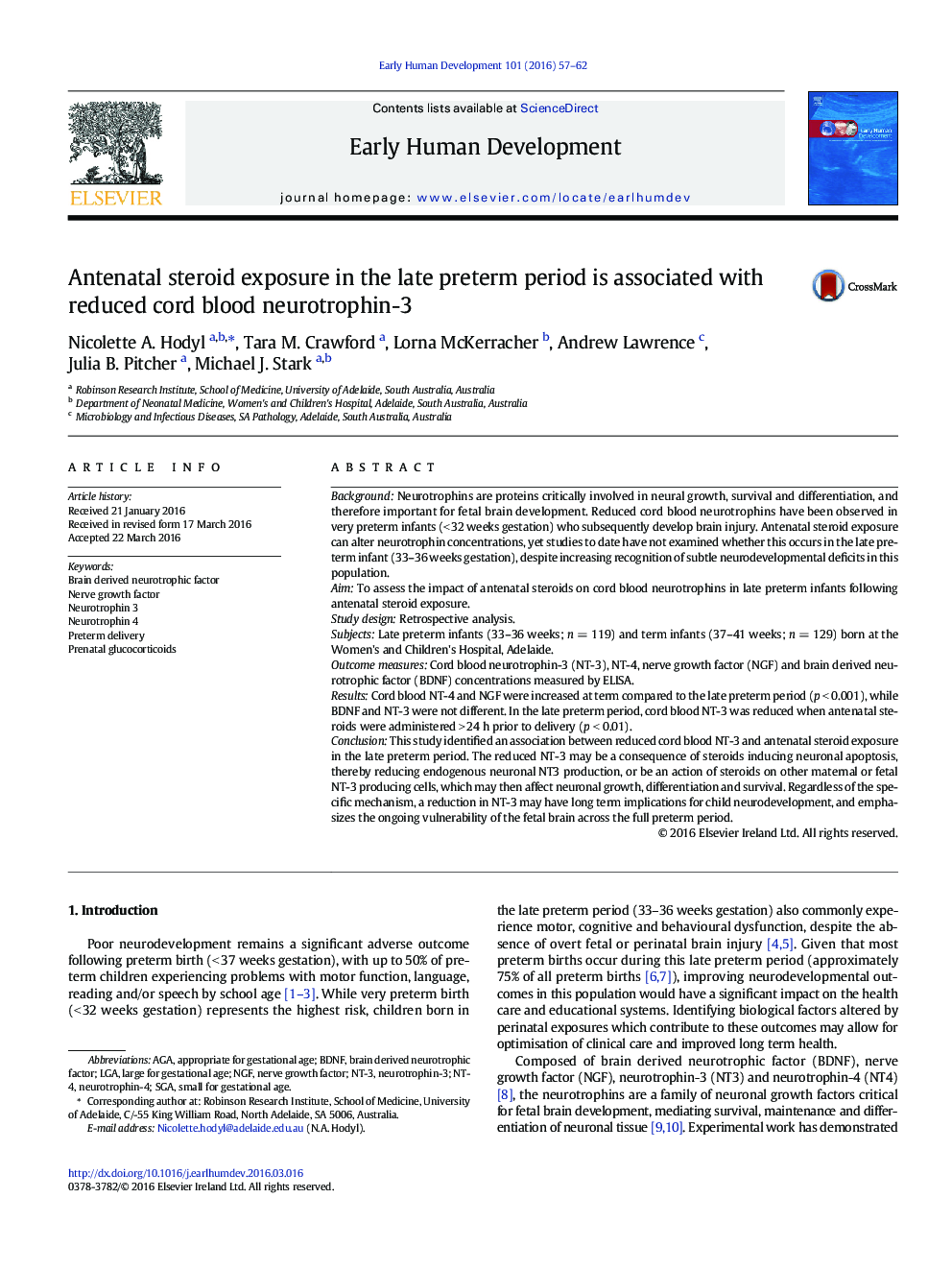| Article ID | Journal | Published Year | Pages | File Type |
|---|---|---|---|---|
| 3916667 | Early Human Development | 2016 | 6 Pages |
•Cord blood concentrations of NT-4 and NGF increased over late gestation, while NT-3 and BDNF remained relatively stable.•Antenatal steroid therapy administered in the late preterm period was associated with reduced cord blood neurotrophin-3.•Since neurotrophins are vital for fetal brain development, reduced NT-3 following steroid therapy warrants further study.
BackgroundNeurotrophins are proteins critically involved in neural growth, survival and differentiation, and therefore important for fetal brain development. Reduced cord blood neurotrophins have been observed in very preterm infants (< 32 weeks gestation) who subsequently develop brain injury. Antenatal steroid exposure can alter neurotrophin concentrations, yet studies to date have not examined whether this occurs in the late preterm infant (33–36 weeks gestation), despite increasing recognition of subtle neurodevelopmental deficits in this population.AimTo assess the impact of antenatal steroids on cord blood neurotrophins in late preterm infants following antenatal steroid exposure.Study designRetrospective analysis.SubjectsLate preterm infants (33–36 weeks; n = 119) and term infants (37–41 weeks; n = 129) born at the Women's and Children's Hospital, Adelaide.Outcome measuresCord blood neurotrophin-3 (NT-3), NT-4, nerve growth factor (NGF) and brain derived neurotrophic factor (BDNF) concentrations measured by ELISA.ResultsCord blood NT-4 and NGF were increased at term compared to the late preterm period (p < 0.001), while BDNF and NT-3 were not different. In the late preterm period, cord blood NT-3 was reduced when antenatal steroids were administered > 24 h prior to delivery (p < 0.01).ConclusionThis study identified an association between reduced cord blood NT-3 and antenatal steroid exposure in the late preterm period. The reduced NT-3 may be a consequence of steroids inducing neuronal apoptosis, thereby reducing endogenous neuronal NT3 production, or be an action of steroids on other maternal or fetal NT-3 producing cells, which may then affect neuronal growth, differentiation and survival. Regardless of the specific mechanism, a reduction in NT-3 may have long term implications for child neurodevelopment, and emphasizes the ongoing vulnerability of the fetal brain across the full preterm period.
